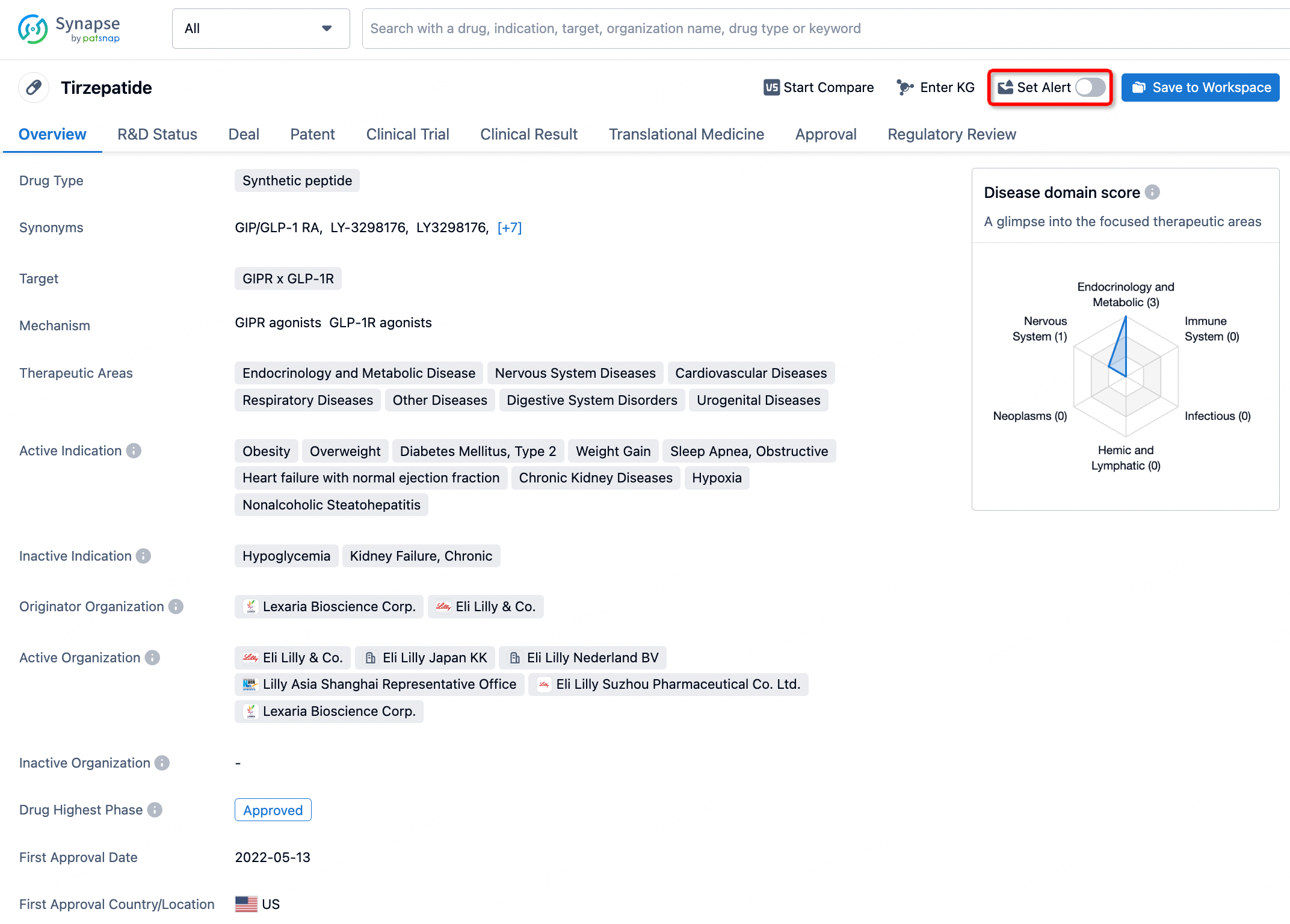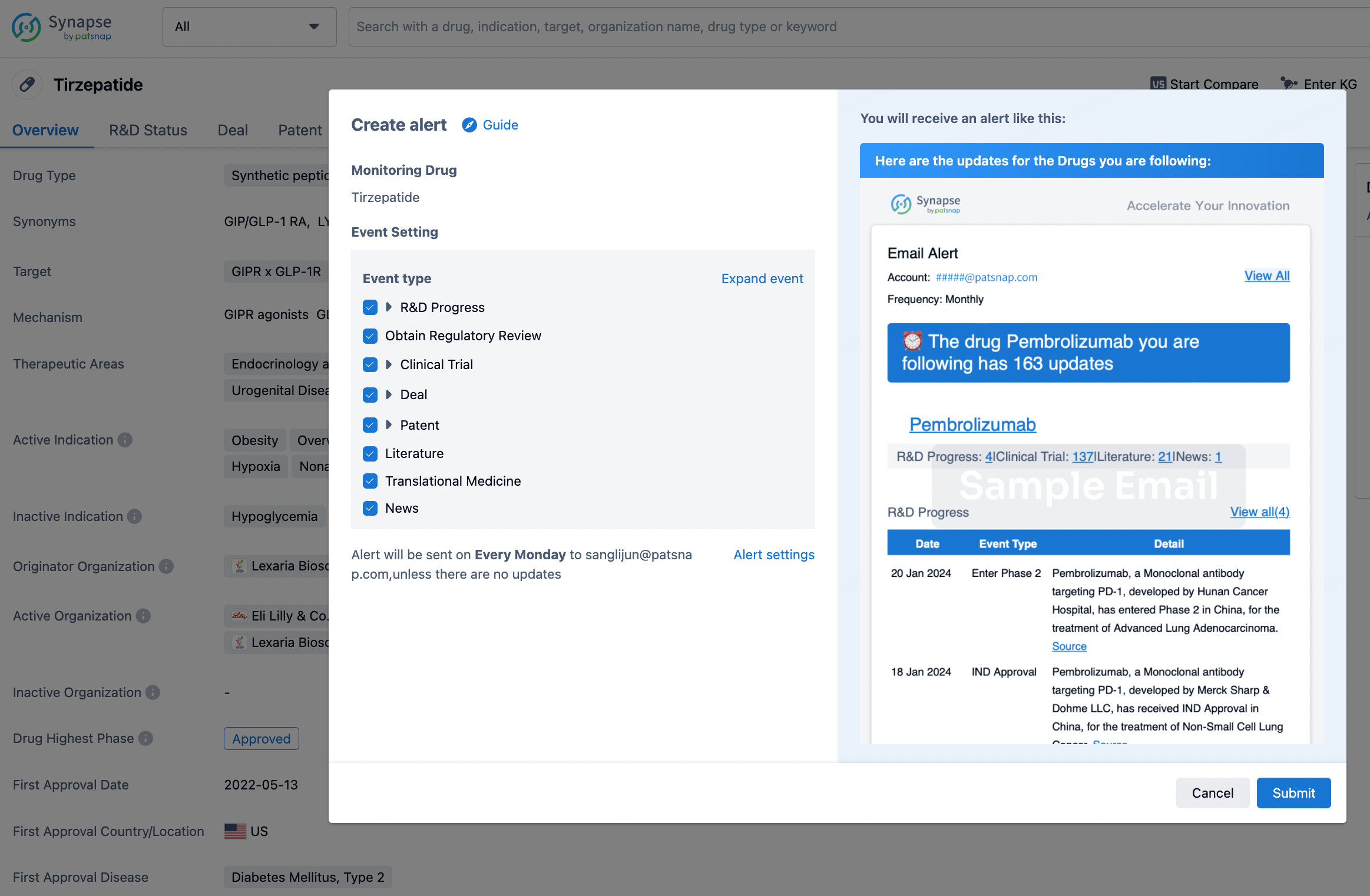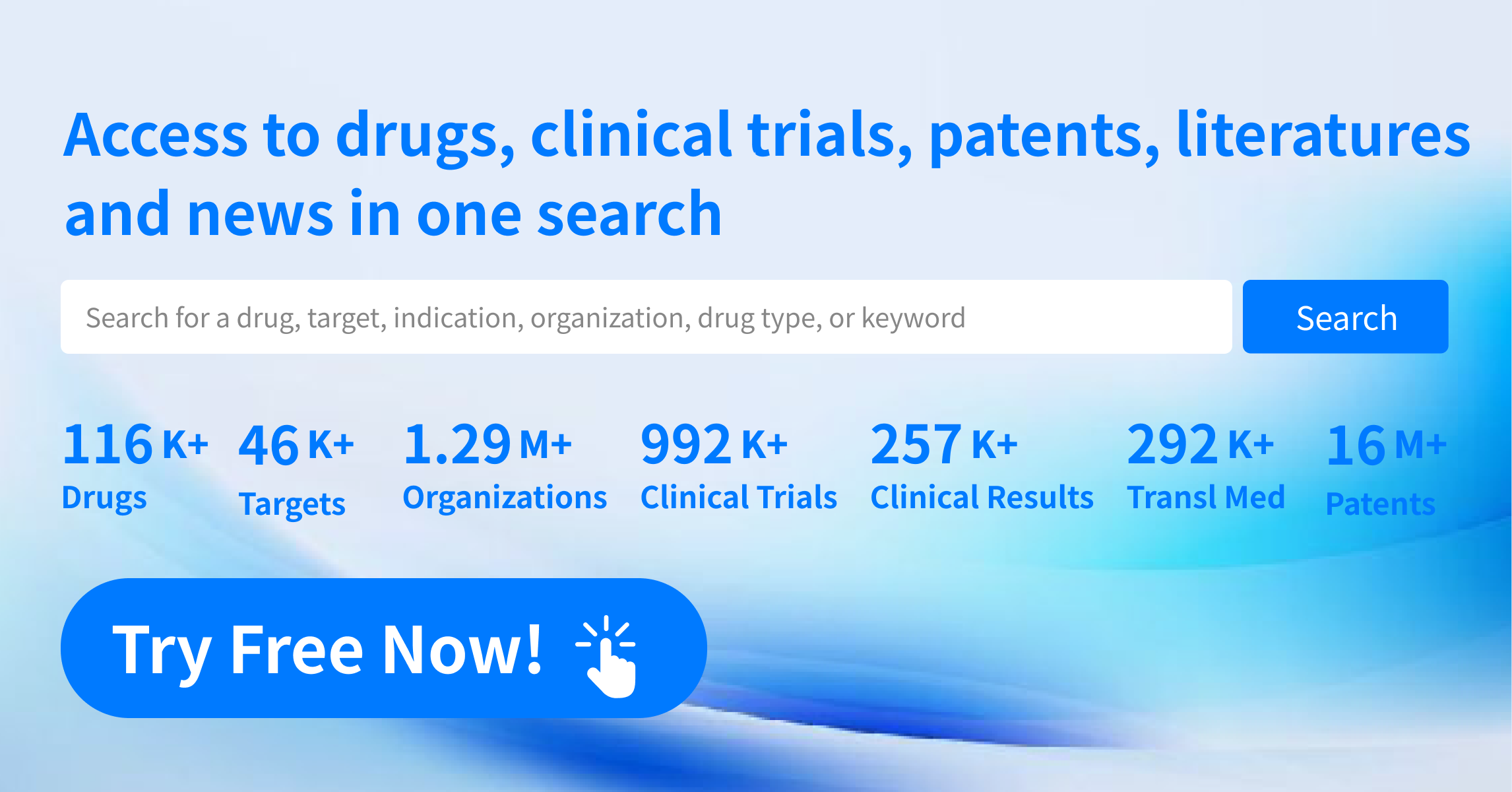Request Demo
What is the mechanism of Etofamide?
18 July 2024
Etofamide is an antiparasitic agent primarily used for the treatment of intestinal amoebiasis, a condition caused by the protozoan parasite Entamoeba histolytica. Understanding the mechanism of action of etofamide involves delving into its pharmacodynamics, the way it affects amoebic cells, and how it ultimately contributes to the eradication of the parasite from the host's body.
The pharmacodynamics of etofamide center on its ability to interfere with the vital cellular processes of Entamoeba histolytica. Etofamide is believed to exert its amoebicidal effects by inhibiting the synthesis of nucleic acids and proteins within the parasite. This inhibition occurs through the disruption of both DNA and RNA functions, which are crucial for the amoeba's replication and survival.
One of the primary mechanisms by which etofamide acts is through the production of reactive oxygen species (ROS) within the parasite. These ROS cause oxidative stress, leading to damage of cellular components such as lipids, proteins, and nucleic acids. The oxidative damage inflicted on these essential biomolecules results in the impaired functioning of various metabolic pathways within the amoeba, ultimately leading to cell death.
Moreover, etofamide interferes with the energy metabolism of Entamoeba histolytica. The drug disrupts the glycolytic pathway, which is the primary source of ATP (adenosine triphosphate) production in the anaerobic environment of the amoeba's habitat. By inhibiting key enzymes involved in glycolysis, etofamide effectively starves the parasite of its energy supply, further contributing to its demise.
Another aspect of etofamide's action is its effect on the parasite's membrane integrity. The drug disrupts the lipid bilayer of the amoeba's cell membrane, increasing its permeability. This disruption causes leakage of intracellular contents and an influx of extracellular ions, leading to osmotic imbalance and cell lysis.
In addition to its direct amoebicidal effects, etofamide has been shown to modulate the host's immune response. It enhances the phagocytic activity of macrophages and stimulates the production of reactive nitrogen species (RNS) such as nitric oxide (NO). These immune mechanisms further aid in the clearance of the parasite from the host's gastrointestinal tract.
The selective toxicity of etofamide towards Entamoeba histolytica over the host's cells can be attributed to differences in cellular metabolism and drug uptake mechanisms. While the exact transporters involved in the uptake of etofamide by the parasite remain to be fully elucidated, it is clear that the drug accumulates more readily within the amoeba, ensuring effective concentrations are achieved to exert its therapeutic action.
Overall, the mechanism of action of etofamide is multifaceted, involving oxidative stress induction, disruption of energy metabolism, impairment of nucleic acid and protein synthesis, membrane destabilization, and modulation of the host's immune responses. This comprehensive approach ensures the effective eradication of Entamoeba histolytica, making etofamide a valuable agent in the treatment of intestinal amoebiasis.
By understanding these mechanisms, healthcare providers can better appreciate the therapeutic potential of etofamide and its role in combating amoebic infections, thereby improving patient outcomes and contributing to the overall control of amoebiasis.
This detailed exploration of how etofamide works not only underscores its efficacy but also highlights the importance of targeted antiparasitic therapies in modern medicine.
The pharmacodynamics of etofamide center on its ability to interfere with the vital cellular processes of Entamoeba histolytica. Etofamide is believed to exert its amoebicidal effects by inhibiting the synthesis of nucleic acids and proteins within the parasite. This inhibition occurs through the disruption of both DNA and RNA functions, which are crucial for the amoeba's replication and survival.
One of the primary mechanisms by which etofamide acts is through the production of reactive oxygen species (ROS) within the parasite. These ROS cause oxidative stress, leading to damage of cellular components such as lipids, proteins, and nucleic acids. The oxidative damage inflicted on these essential biomolecules results in the impaired functioning of various metabolic pathways within the amoeba, ultimately leading to cell death.
Moreover, etofamide interferes with the energy metabolism of Entamoeba histolytica. The drug disrupts the glycolytic pathway, which is the primary source of ATP (adenosine triphosphate) production in the anaerobic environment of the amoeba's habitat. By inhibiting key enzymes involved in glycolysis, etofamide effectively starves the parasite of its energy supply, further contributing to its demise.
Another aspect of etofamide's action is its effect on the parasite's membrane integrity. The drug disrupts the lipid bilayer of the amoeba's cell membrane, increasing its permeability. This disruption causes leakage of intracellular contents and an influx of extracellular ions, leading to osmotic imbalance and cell lysis.
In addition to its direct amoebicidal effects, etofamide has been shown to modulate the host's immune response. It enhances the phagocytic activity of macrophages and stimulates the production of reactive nitrogen species (RNS) such as nitric oxide (NO). These immune mechanisms further aid in the clearance of the parasite from the host's gastrointestinal tract.
The selective toxicity of etofamide towards Entamoeba histolytica over the host's cells can be attributed to differences in cellular metabolism and drug uptake mechanisms. While the exact transporters involved in the uptake of etofamide by the parasite remain to be fully elucidated, it is clear that the drug accumulates more readily within the amoeba, ensuring effective concentrations are achieved to exert its therapeutic action.
Overall, the mechanism of action of etofamide is multifaceted, involving oxidative stress induction, disruption of energy metabolism, impairment of nucleic acid and protein synthesis, membrane destabilization, and modulation of the host's immune responses. This comprehensive approach ensures the effective eradication of Entamoeba histolytica, making etofamide a valuable agent in the treatment of intestinal amoebiasis.
By understanding these mechanisms, healthcare providers can better appreciate the therapeutic potential of etofamide and its role in combating amoebic infections, thereby improving patient outcomes and contributing to the overall control of amoebiasis.
This detailed exploration of how etofamide works not only underscores its efficacy but also highlights the importance of targeted antiparasitic therapies in modern medicine.
How to obtain the latest development progress of all drugs?
In the Synapse database, you can stay updated on the latest research and development advances of all drugs. This service is accessible anytime and anywhere, with updates available daily or weekly. Use the "Set Alert" function to stay informed. Click on the image below to embark on a brand new journey of drug discovery!
AI Agents Built for Biopharma Breakthroughs
Accelerate discovery. Empower decisions. Transform outcomes.
Get started for free today!
Accelerate Strategic R&D decision making with Synapse, PatSnap’s AI-powered Connected Innovation Intelligence Platform Built for Life Sciences Professionals.
Start your data trial now!
Synapse data is also accessible to external entities via APIs or data packages. Empower better decisions with the latest in pharmaceutical intelligence.


